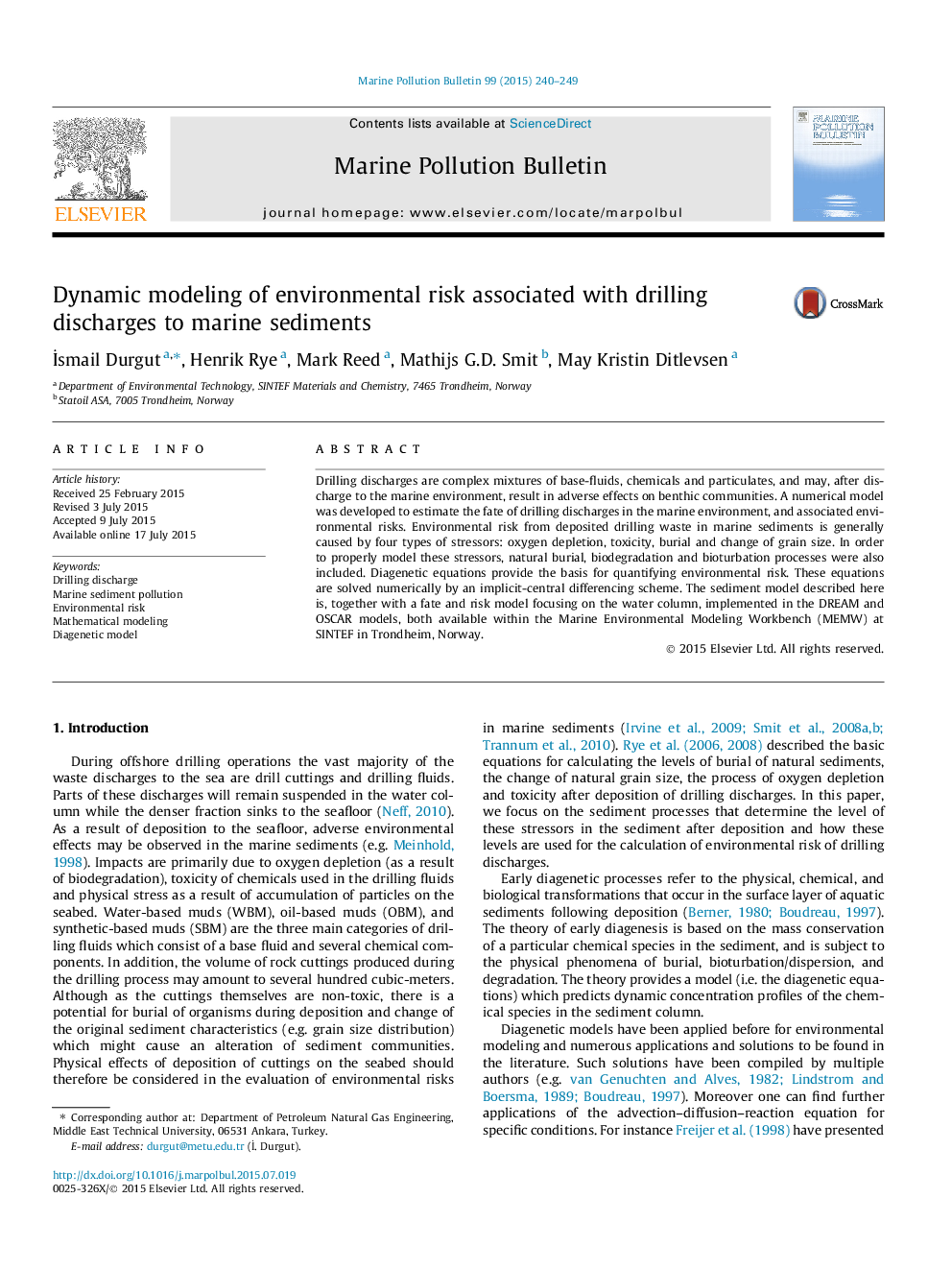| Article ID | Journal | Published Year | Pages | File Type |
|---|---|---|---|---|
| 4476670 | Marine Pollution Bulletin | 2015 | 10 Pages |
•Model: assesses environmental risks from drilling discharges in marine sediments.•Environmental stressors: oxygen depletion, toxicity, burial and change of grain size.•Processes: burial, biodegradation, bioturbation processes by diagenetic equations.•Results: combines temporal evolution of contribution to risk in marine sediments.•Application: module in SINTEF marine environmental modeling workbench MEMW.
Drilling discharges are complex mixtures of base-fluids, chemicals and particulates, and may, after discharge to the marine environment, result in adverse effects on benthic communities. A numerical model was developed to estimate the fate of drilling discharges in the marine environment, and associated environmental risks. Environmental risk from deposited drilling waste in marine sediments is generally caused by four types of stressors: oxygen depletion, toxicity, burial and change of grain size. In order to properly model these stressors, natural burial, biodegradation and bioturbation processes were also included. Diagenetic equations provide the basis for quantifying environmental risk. These equations are solved numerically by an implicit-central differencing scheme. The sediment model described here is, together with a fate and risk model focusing on the water column, implemented in the DREAM and OSCAR models, both available within the Marine Environmental Modeling Workbench (MEMW) at SINTEF in Trondheim, Norway.
